It’s been a busy January here, with my trip to Cleveland to give some well-received talks at C-SEA followed by a grueling week of fishroom preparation in advance of Reef Builder’s world-reknowned Jake Adams dropping by for a surprise visit and a bit of Q&A at the Lake Superior Marine Aquarium Club’s winter / holiday / new year bash. Of course, the Lightning Maroon breeding and rearing doesn’t stop because life gets in the way, but you better believe the online posts can sometimes drop in priority!
Spawn #20 has progressed, but not without hiccups. You may recall I split this batch between the 10 gallon tank and a 15 gallon BRT (black round tub), earlier this month. This proved to be a wise move. More on that in a second, but I found it extremely interesting to note that the larvae which were moved to the BRT under 24 hour light grew faster and underwent metamorphosis sooner…3-4 days sooner, than the ones left in the 10 gallon tank (which by default gets around an 8 hour dark period). Just before my trip to Cleveland, I took this shot of the babies in the BRT:
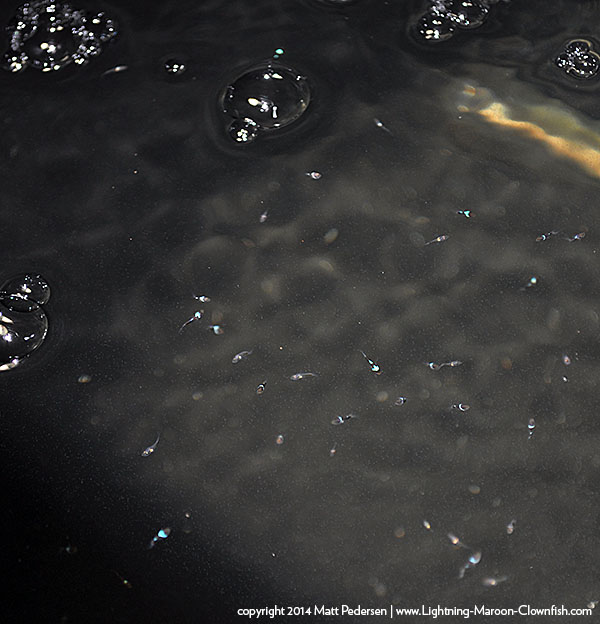
Spawn #20 in the BRT, post metamorphosis, already easily discernable as white stripes or lightnings.
During my time at C-SEA, my good friend and fellow clownfish breeder Mike Doty (you may recall he helped hatch and rear the very first Lightnings) was keeping an eye on the fishroom. For no reason, somewhere around the 17th or so, the babies in the 10 gallon just died. Mike can’t explain it, I can’t explain it. We’ve seen this happen before.
Meanwhile the ones in the BRT fared better, but there still have been losses. During one of Mike’s stop overs, he found 7 dead. This photograph from 1-27-2014:
Most recently, on the 28th I started a water change, which normally is done with a very slow siphon into a 5 gallon bucket, the intake being placed so that it won’t drain the tank completely. Well…I didn’t have it really clamped down, and so it drained the BRT ompletely. Those babies which were still in a couple mm of water survived the 99.9% water change, but those that were in shallower water – damp, but not submerged – were dead. 21 lost totally due to a preventable accident. The upside is that the fish took a very traumatic, near 100% water change, and yet survived.
I’m guesstimating another 20-30 still alive. Either way, that shows you the losses through attrition that happen as these fish grow up – I stocked the BRT with 140 larvae.
Spawn #21 – I left Spawn #21 more or less in the hands of Mike to hatch…a handful of offspring had hatched out on the morning of the 17th (pulling the nest on the 16th was 7 days post spawn), and later that afternoon I had to depart for Cleveland. Unfortunately, the tile fell overnight, so come the 18th, instead of Mike finding a bunch of larvae hatched out, he came over to find a dead nest.
The few offspring that did make it from Spawn #21 underwent metamorphosis during Jake’s visit; it was pretty clear to see which were lightnings vs. not by Saturday night (the 25th)….this seems to be a pretty fast time to metamorphosis. My headcount on offspring from this batch is somewhere around 4-6 post settlement…another very small run. This photo also from 1/27/2014:
Spawn #22 – on the afternoon of 1/20/2014, the 22nd clutch of eggs was put down by the Lightning Maroon and her mate. Paying a close attention to things, I knew I could be pulling them as early as 6 days post spawn…so 21,22,23,24,24, evening of the 26th being 6 days on. Well, I took a gamble, left a little more ambient room light falling on the eggs, and found that on the morning of the 27th, we still had a nice, solid nest. Come the evening of the 27th, I pulled the tile along with 5 gallons of broodstock water and 5 gallons of new saltwater, and set them up with a wooden airstone incubation. I used a second tile to prevent the tile from falling, as well as to help weigh down and position the wooden airstone under the eggs. (I found my wooden airstones from eBay seller hoolko, who happened to be mentioned on Reef Builders a while back).
Within minutes of transferring the nest, I had a few larvae hatch, still in full light.
I left things go, not feeding or anything else. By the morning of January 28th, I had a few dozen larvae in the tank, but the bulk of the eggs remained unhatched. I weighed my options a bit, and ultimately decided to introduce some rotifers (about 2 gallons worth) but refrained from adding any phytoplantkon. I thought maybe I’d have more hatches later in the day, but come nightfall, nothing had happened. Would this be a botched hatch?
Apparently yes and no. This morning (the 29th) several hundred larvae were present in the tank, but many many more dead eggs were on the bottom. Most of the larvae held tightly to the black back wall of the 10 gallon tank.
I took the opportunity to first siphon off all the dead eggs (and dead larvae) on the bottom before tinting the tank with 50 drops of RotiGreen Omega.
I gave the rotifers their morning feeding of RotiGrow Plus, and later this evening they’ll get the next infusion of rotifers. I’m thinking I will once again work on a system of water changes, lowering salinity, and 24 hour lighting, to grow this batch, and as I discovered, I will once again at minimum split the batch early on.
The Holdback F1 Lightning Maroon Clownfish Pair
So I finally pulled the trigger on pairing up my holdbacks. The Ecoxotic cube had been up and running for a while with a single holdback Lightning in it, so I swapped the fish and simply added in my Lightnings as a pair (they had formerly been neighbors, side by side) on 1/21/2014.
Initially, things went very well. Here’s some video the day after, 1/22/2014.
Unfortunately, things didn’t continue down this blissful path. A few days later, the larger fish turned on the smaller fish, damaging a few fins and forcing me to segregate the fish around 1/25/2014. Currently, it is the larger, “future female” Lightning Maroon who resides in a drilled specimen cup.
The Holdback White Stripe Maroon F1 Pair
I should mention that somewhere in January I shuffled some fish around and introduced my two F1 PNG White Stripe holdbacks to each other as well. The pairing has gone so-so. They are not paired, but they continue to share their tank, the smaller fish cowering in a protected area but not otherwise excessively abused. I’ll try to snag some photos at some point. This will be a very important pairing to breed, as it will help definitively answer the question as to whether the “white stripe” siblings carry any special genetics (and it will prove or disprove the presence of a recessive Lightning gene).

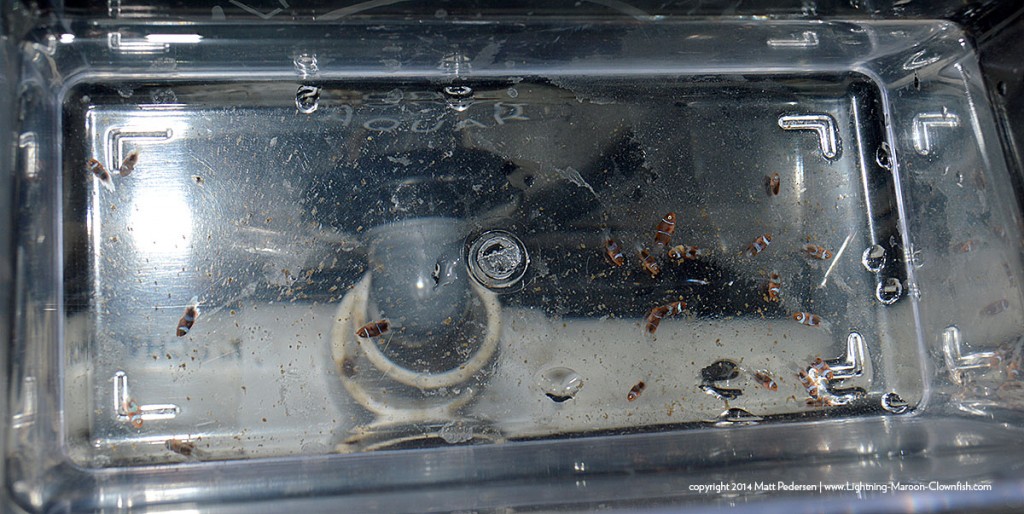
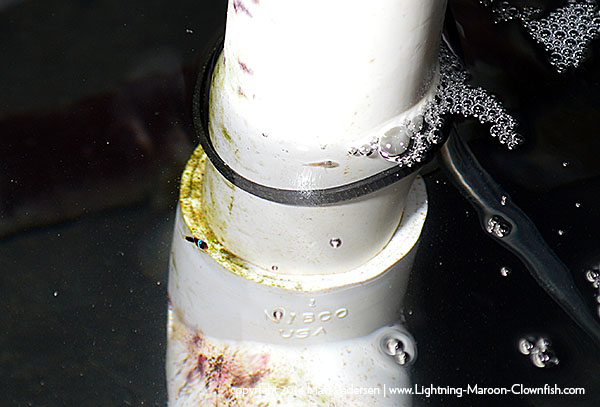
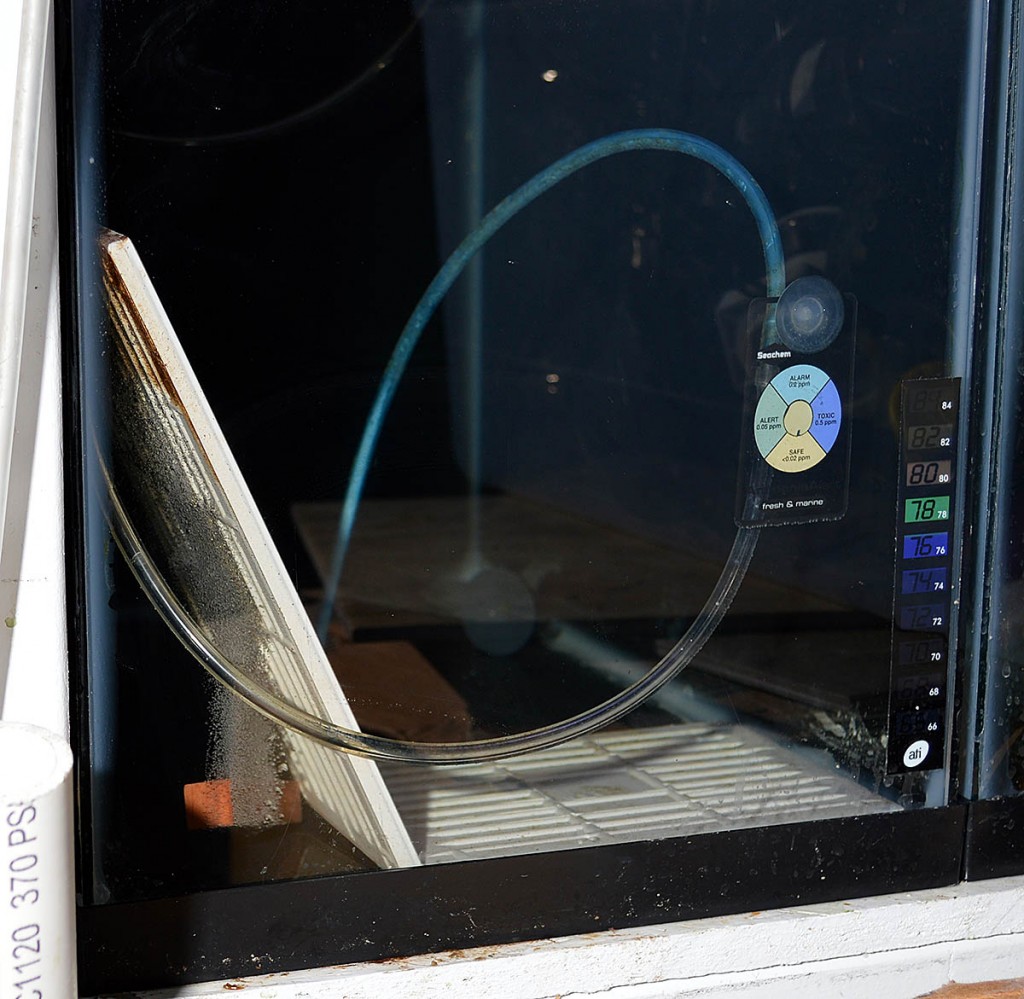
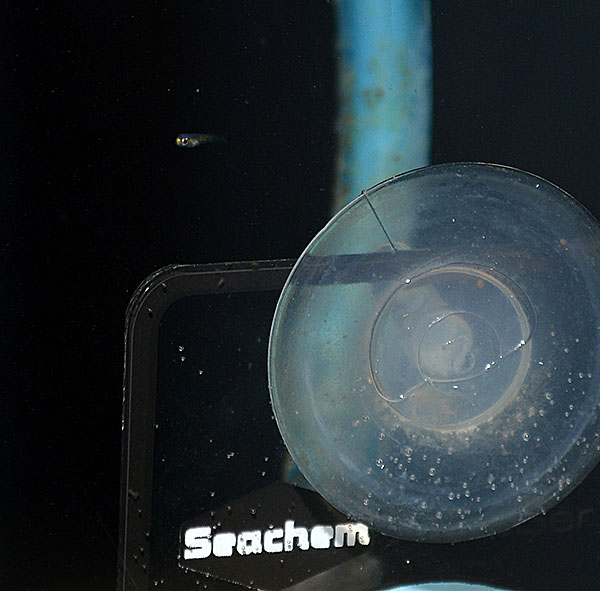
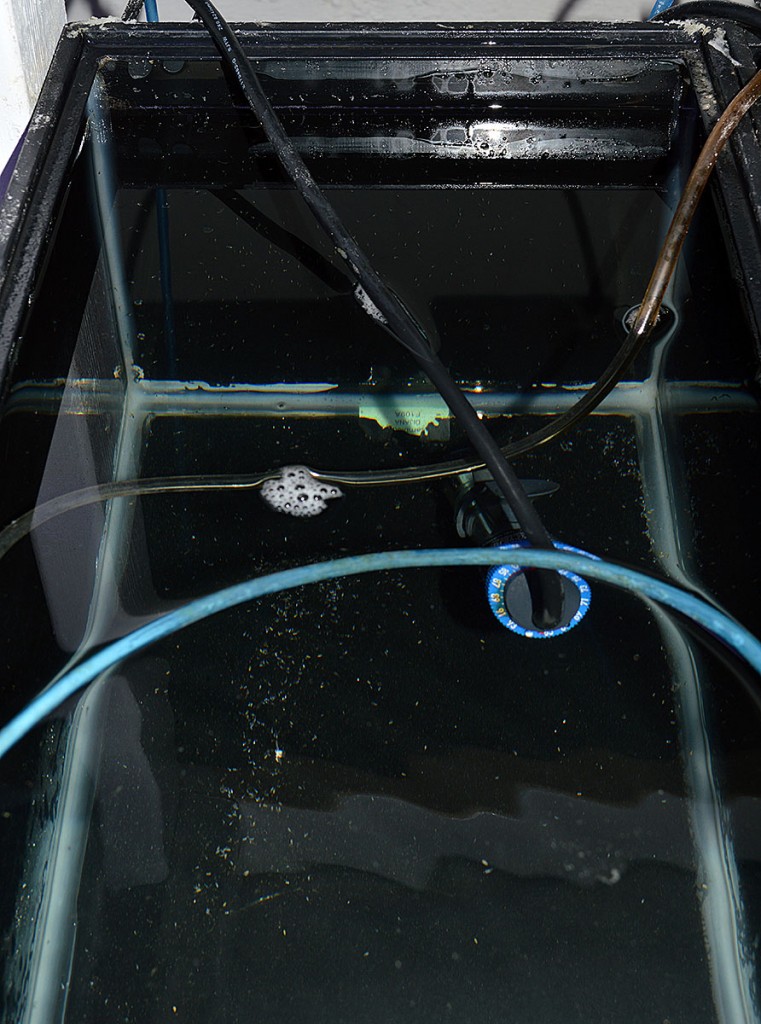
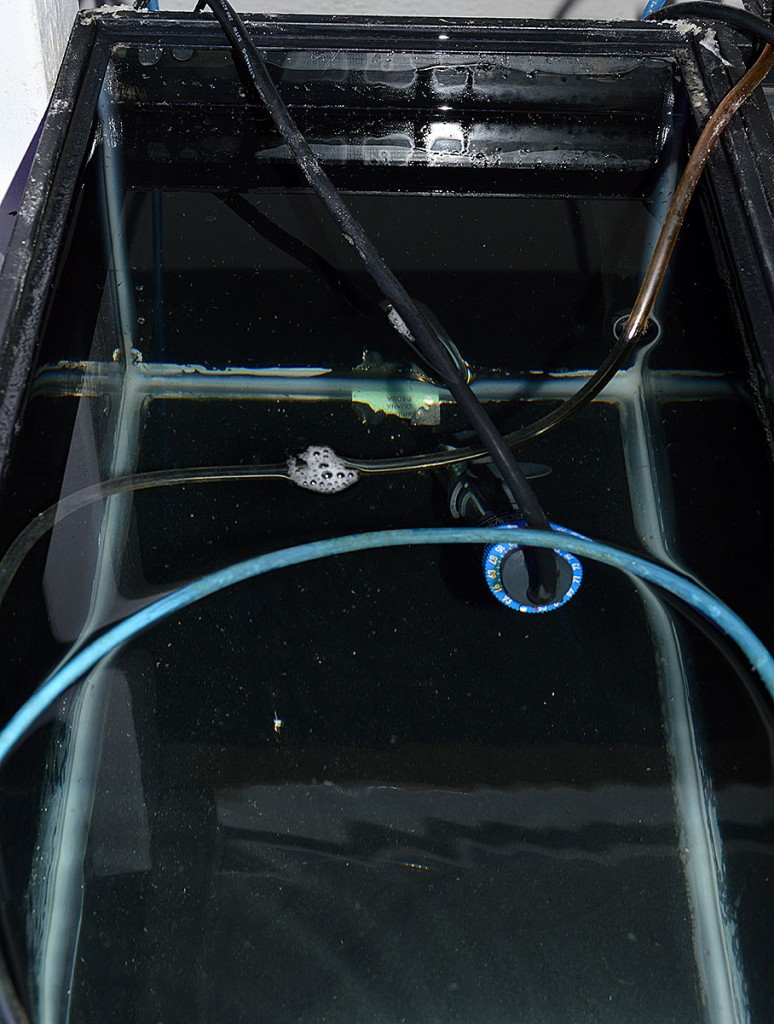
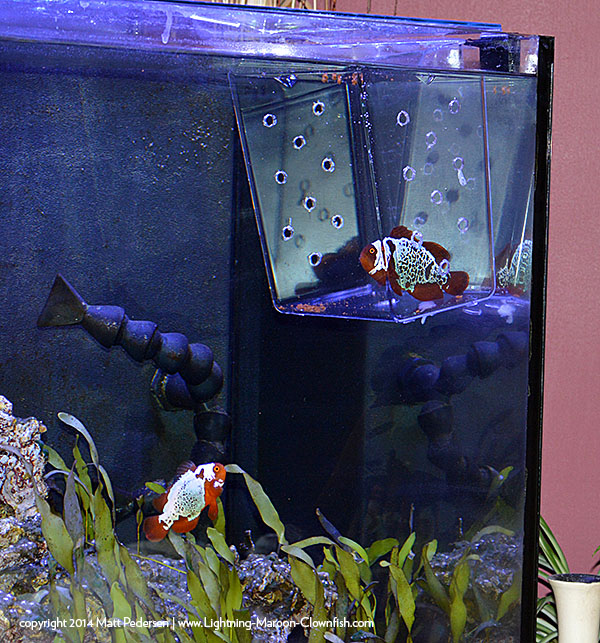
Recent Comments